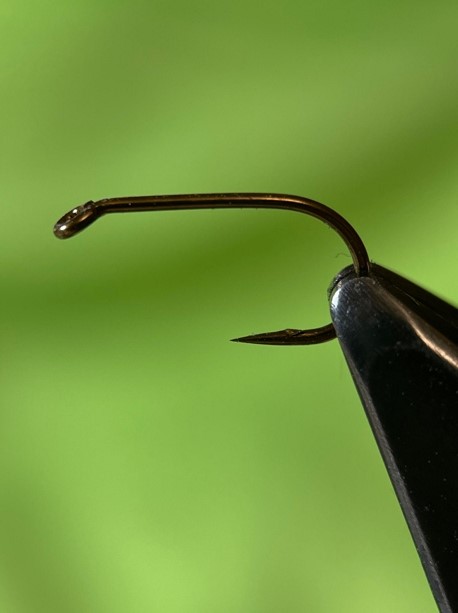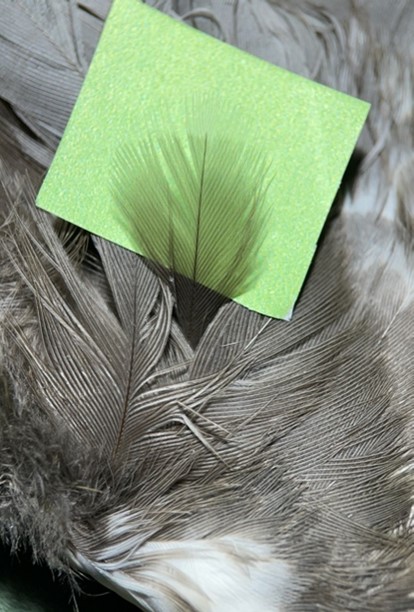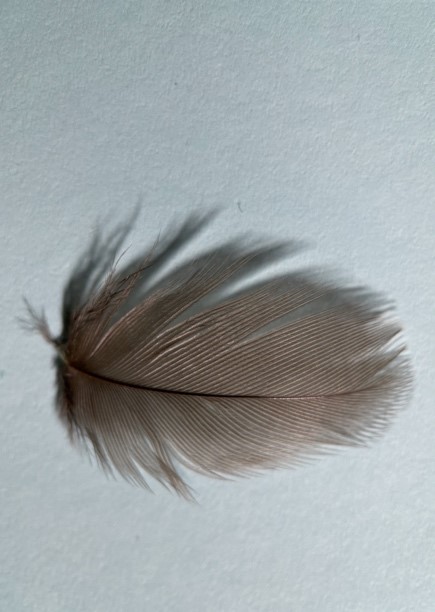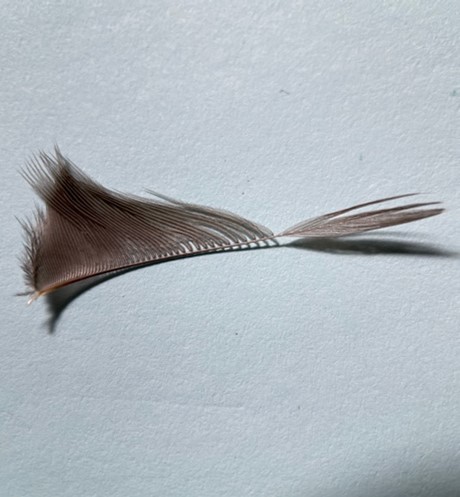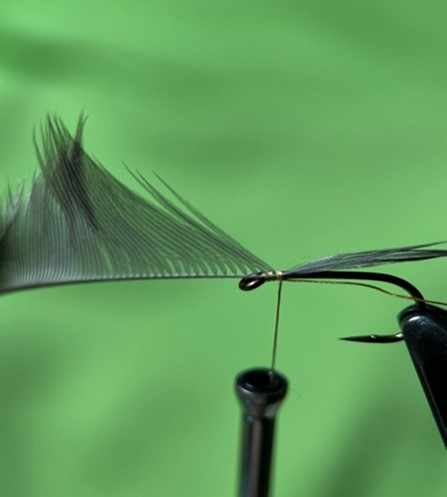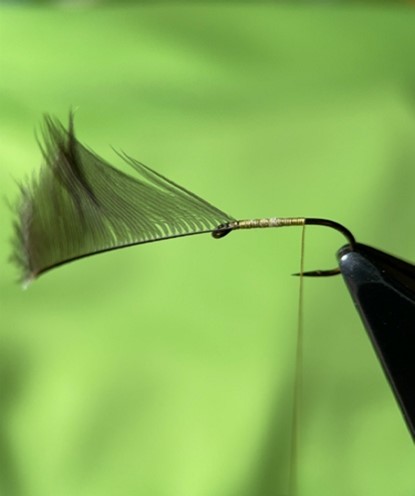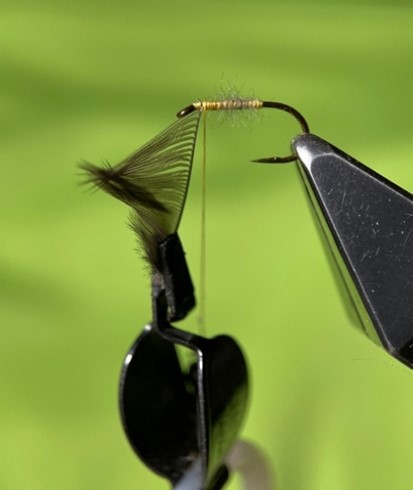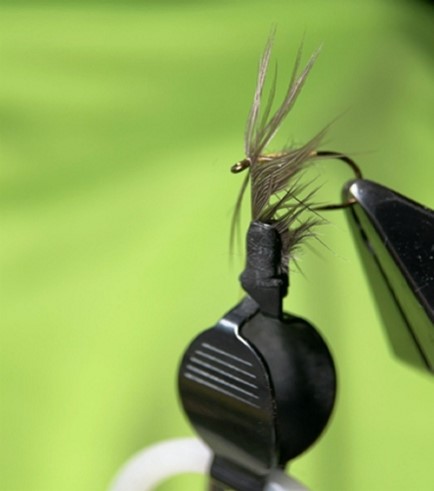WATERHEN BLOA
Produced by Michael Pattinson - February 2021.
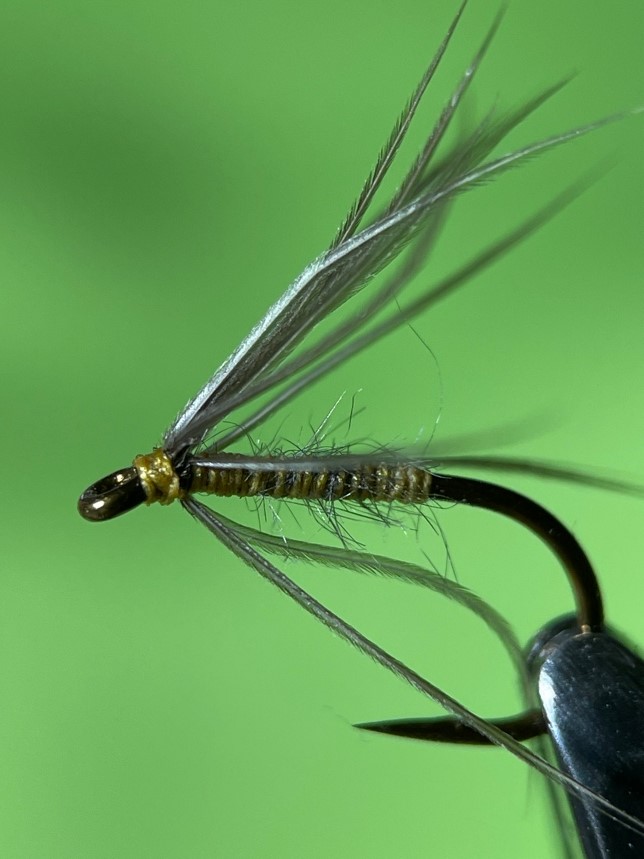
History
A detailed and authoritative account of the history and origins of North Country Spider patterns can be found in the book by Robert L Smith, “The North Country Fly”. The tying instructions, to be found in T E Pritt’s book, “North Country Flies” first published in 1885 list the following:-
Wings – Hackled feather from the inside of a Water-Hen wing.
Body – Yellow silk, dubbed with the fur of the Water-Rat or Water Vole (a protected species now)
Pritt states that the fly is indispensable in March and April and is a good Grayling fly all through the winter months. The term Bloa is a North Country word meaning slate blue/grey. It is very unlikely that Trout will mind if mole fur is used as a substitute for the Water Rat and it would be a pity to sacrifice a Water hen for the sake of a few suitably small, softly mobile, greyish feathers taken from another species, but the purist may insist on using the original materials. It is also worth saying that the Waterhen or Moorhen, Gallinura chloropus, has a red bill base and is not the same as the Coot, Fulica atra, which has a white bill and bald forehead – hence the expression bald as a coot!
Tying the Fly
It is easy to tie this fly but not so easy to tie a really good version. The thread wraps should be made with a “rope like” thread, achieved by spinning the bobbin to tighten up the fibres and each wrap should be butted up to the next one to give the impression of a segmented insect body. The Mole fur dubbing must be very sparse so that the yellow thread colour shows through. This is achieved by waxing the thread and then dabbing a ball or pinch of Mole fur onto the waxed thread to make it stick. As with all tying, the last couple of steps can ruin a fly. Cut the thread close to the eye and add the smallest amount of varnish to the final wraps to secure the thread. If any varnish leaks onto the base of the feather barbs they will become brittle and break off.
Fishing the Waterhen Bloa
Most effective when fished early in the season or late in September but Spiders can work almost any time and are also good on still waters. Generally fished on the river with an upstream cast as a team of three to represent sub-surface nymphs.
Method
